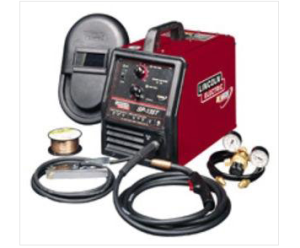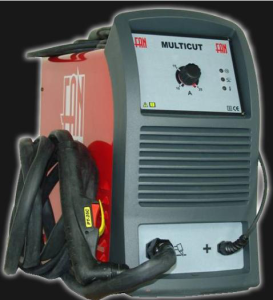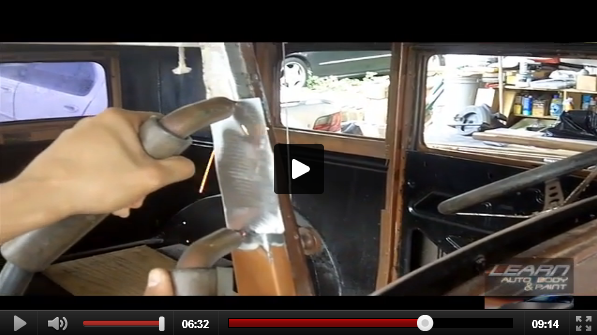Discover Auto Rust Repair…3 Highly Effective and Achievable Rust Removal Solutions.
As long as there is water and salt on the roads and in the air and as long as cars are manufactured out of steel, there will always be the need for auto rust repair.
Today we’re going to help you understand more on the following 3 rust removal areas:
Rust Removal by Sanding
Rust Removal by Panel Replacement
Installing Rust Repair Panels
Although there have been major advances in undercoats and corrosive resistant materials, rust is still a major cause for concern.
Why is rust still such a large concern for motorists?
The extensive use of salt and sand on the roads to make icy winter driving safe has a powerful effect on steel car bodies. The salts are such a catalyst to rust that actual rust through of body panels can happen in as little as a few years.
Water is also a catalyst for rust and in areas of countries that are arid, steel car bodies can last virtually forever.
Auto rust repair may at times therefore be more necessary than collision repair, depending upon your geographical location and/or where you have kept your vehicle.
What to do if you notice any rust on your vehicle:
If you spot rust, you will need to detect whether it is only found on the surface or if it is corrosion that penetrates through the entire panel.
Surface rust, with solid metal found beneath it, can be easily removed with sanding followed by the application of epoxy primer.
What is Epoxy Primer?
Epoxy primer is used for waterproofing and to protect bare metal from the process of oxidation. You should need to apply one/two coats.
You will need to use these kinds of primers on bare metal before you would apply anything else.
Two important characteristics of epoxy primer are:
Protects and adheres very well to bare metal.
Provides a perfect base product for undercoats and paint.
If the rust problem is more advanced and has heavily pitted the sheet metal, it will be necessary for you to perform more extensive rust repairs before applying paint.
Rust repair of this nature can be done by media blasting or by using a chemical stripper followed by applying epoxy primer. You will then need to follow up with an application of high-build primer.
Even more severe rust problems for example when the rust has penetrated through the sheet metal, will require restoration with the use of rust repair panels welded onto existing bodywork.
Auto Rust Repair Solution 1 – Rust Removal by Sanding
Surface rust removal from solid sheet metal can be achieved by using a sanding block and 80- to 100-grit sandpaper.
Once all the rust is gone and you’re down to either bare metal or painted metal, wipe the panel down using wax and grease remover. Next coat the panel with epoxy primer. Sanding scratches left behind from using the coarse grit sandpaper will provide excellent adhesion for the epoxy primer.
Always remember to take care of any dents by repairing or filling them and then applying a coat of high build primer before you block sand.
Auto Rust Repair Solution 2 – Rust Removal by Panel Replacement
For panels that are damaged beyond repair due to widespread rust, rust removal won’t be necessary. You are better off replacing the panels with healthy new ones. If you are replacing a complete panel such as a door for example, the process is the same for rust repair as it is for collision repair.
It really doesn’t matter if you decide to use genuine new factory replacement panels, cheaper after-market units or used parts; what is important is that you search for the best products that will fit your price range.
The surface preparation process may be slightly different, compared with the rest of the vehicle, when you use new replacement panels. Make sure you clean such panels using wax and grease remover before you do anything else.
You will have to scuff the surface using a Scotch Brite pad otherwise the primer and paint won’t adhere properly to it.
You should ask an auto paint supply store worker for their recommendations on the correct undercoat product necessary to prep the panel that is compatible with your adopted paint system.
It’s important to remember that any application of primer undercoats should be completed before you install the panel back onto the vehicle.
In addition, only apply the top coats once the panel has been correctly installed and aligned making it easier for you to accomplish proper paint blending.
Auto Rust Repair Solution 3 – Installing Rust Repair Panels
Rust repair panels are generally used in the restoration of vintage vehicles; however they are becoming more commonly used on later model vehicles as the average vehicle age increases.
Rust repair panels are the best rust repair method for areas such as the lower parts of a door or a portion of the main body including the rear quarter panel that is beyond all other means of repair.
For those of you working on a mainstream vehicle, it is very likely a rust repair panel for your particular application will be available.
When installing rust repair panels, you must first determine how much of the original panel to remove in order to weld the new panel into place. You should be able to remove all of the damaged or rusted area, but not so much that the panel doesn’t cover the entire area.
Don’t worry if the available rust repair panel is not large enough to cover the entire area that needs to be repaired, it may still be useful for repairing the elaborate body lines of the damaged area.

Follow this 8-Step System to Effectively Install Rust Repair Panels
Step 1. First fit the panel in place, then scribe or mark a line on the original panel. The original panel below this line will be removed.
Step 2. Since the rust repair panel will be welded into place, the existing paint (and any body filler) needs to be ground away with a grinder. Approximately 2 inches of bare metal should surround the area to be welded.
Step 3. Before cutting the original metal away, double check the fit of the rust repair panel and then scribe the line along where the cut will be made. It pays to double check the fit of the rust repair panel before cutting anything.
This is so you don’t have to weld in an additional panel between the original metal and the rust repair panel you are installing. It is much easier to make a second cut than to add more material.
Step 4. A range of tools such as a plasma cutter, die grinder, reciprocating saw or tin snips can be used to cut out the damaged section. Accurately fitting the panel, marking the cut accordingly and then accurately cutting out the panel will provide a better rust repair panel installation.

Step 5. Once you’ve removed the damaged section, set the rust repair panel in its place, check it for proper alignment, followed by clamping it into its precise location and then finally weld.
The type of weld you want to use will depend upon the panel you are replacing, the type of welder you have available and either the operator’s or your own skills.
When welding with a MIG welder, start with 1/8 inch tacks and skip around to avoid getting the panel too hot which would cause distortion. Another trick is to use your air hose with an air nozzle to blow cool air onto the welds to prevent them from getting too hot.
Step 6. Once you have finished welding, grind it down using a pneumatic grinder. When finished it will be virtually impossible to tell where the seam is located.
Step 7. Finish by cleaning the repaired area with wax and grease remover, apply epoxy primer and finish the bodywork to the surrounding area.
Step 8. Follow up with primer and then block sand as needed before you apply sealer and top coats.
I hope you liked this blog. Talk soon! Bye!
-Tony
P.S. If you want to learn more, about auto body and get all the information you need so you can customize your projects, learn how to restore your classic or put a body kit on your car, check out VIP here: LearnAutoBodyAndPaint VIP Course.
Other Helpful Links:
Learn How To Do A Complete Color Change Car Paint Job Including Auto Trim Removal
DIY Auto Body Work And Painting Q&A – Paint Biting – Orange Peel – Rust Prevention
How To Repair Rust on Car Using Kitty Hair or Bondo Hair

WHY is rust a problem for motorists? Because in many states a small dime size rust hole that has NOTHING to do with cabin safety:(IE:) NJ claims it’s for keeping out harmful emissions- if you’re stuck in a tunnel for hrs. Which simply doesn’t happen. You breath MORE pollution outside in NJ. They CAN fail your car for inspection. It’s a way of making sure poor ppl who can’t afford a new car every 2-3 yrs get hassled w/ fines, revocation of Registration( costs MORE to reinstate) & Inspection. Ending up having to spend money anyway on repairs or loose their car. It just looks like heck on cars that are poorly made cost WAY TOO MUCH for something built by robots & Mexican slave labor.
Wow. Interesting read Robert.
Great article Tony! Just wondering what You should use on the grinder to prep the panel? Wire brush? Grinding disc? Or rough grit sandpaper?
Cheers
16 grit sandpaper…